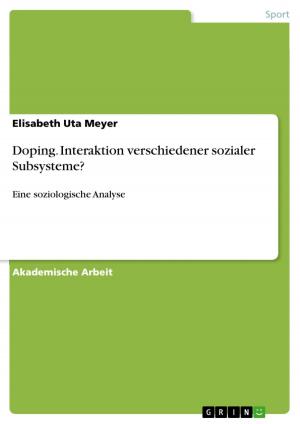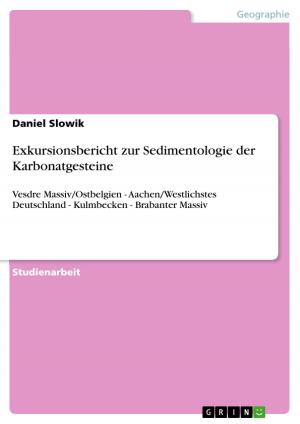A study on Aspergillus flavus
Biochemical characterization of Aspergillus flavus
Nonfiction, Health & Well Being, Medical, Medical Science, Microbiology| Author: | Lisa Nathalie | ISBN: | 9783640989669 |
| Publisher: | GRIN Verlag | Publication: | August 22, 2011 |
| Imprint: | GRIN Verlag | Language: | English |
| Author: | Lisa Nathalie |
| ISBN: | 9783640989669 |
| Publisher: | GRIN Verlag |
| Publication: | August 22, 2011 |
| Imprint: | GRIN Verlag |
| Language: | English |
Technical Report from the year 2011 in the subject Biology - Micro- and Molecular Biology, The University of Mysore (-), course: Biotechnology, language: English, abstract: Aspergillus flavus is the most widely known species of the genus Aspergillus which is known as a species in 1809 and first reported as a plant pathogen in 1920. Many fungi produce mycotoxin, a toxic secondary metabolite. Most A. flavus produces aflatoxin, a type of mycotoxin that is harmful for human, animal, and plant health. Characterization study of this saprophyte is important for the management of various human, animal, and plant diseases as well for surveillance, and other epidemiological study. The study focused on 3 subjects, morphological and physiological study, enzyme activity, and aflatoxin production from ground nut seeds collected from all over India. The growth of this fungus was compared in 4 different media for morphological study and in 4 different temperature on PDA media for physiological study. For enzyme activity, amylolytic, proteolytic, lipolytic, cellulolytic, pectinolytic and catalytic activity were determined. The presence of aflatoxin was performed using thin layer chromatography method. Among 12 isolates, amylase activity was shown by only 12 isolates and there is no clear zone in the remaining 8 isolates. Five isolates did not produce any protease among the 20 tested. Where as 18 isolates were positive for pectin methyl production. In case of lipase, 3 isolates did not show any white precipitation and all other isolates showed white precipitate due to the activity of lipase. Cellulose activity was very low in all the tested isolates and only 2 (AF7 and AF14) isolates exhibited the activity of cellulose in culture plates. Specific activity of catalase was calculated for all the isolates and all the isolates showed varied level of activity. The highest activity (210 mg/ml) was recorded by AF3 isolate and the least activity (1.58 mg/ml) in AF12. Among the 20 of isolates tested, 12 isolates of Aspergillus flavus were toxigenic by fluorescing blue spots for the presence of AFB1/AFB2 or both and 8 isolates. In summary, morphological, physiological, and biochemical studies are important to identify plant pathogenic fungus such Aspergillus flavus. Aflatoxin, being the widely produced mycotoxin of A. flavus is easily contaminates food and soil, thus its detection is required. Furthermore, by screening the extracellular enzymes activity, one can understand the ability of particular fungus to produce certain enzymes that have major contribution in biotechnology.
Technical Report from the year 2011 in the subject Biology - Micro- and Molecular Biology, The University of Mysore (-), course: Biotechnology, language: English, abstract: Aspergillus flavus is the most widely known species of the genus Aspergillus which is known as a species in 1809 and first reported as a plant pathogen in 1920. Many fungi produce mycotoxin, a toxic secondary metabolite. Most A. flavus produces aflatoxin, a type of mycotoxin that is harmful for human, animal, and plant health. Characterization study of this saprophyte is important for the management of various human, animal, and plant diseases as well for surveillance, and other epidemiological study. The study focused on 3 subjects, morphological and physiological study, enzyme activity, and aflatoxin production from ground nut seeds collected from all over India. The growth of this fungus was compared in 4 different media for morphological study and in 4 different temperature on PDA media for physiological study. For enzyme activity, amylolytic, proteolytic, lipolytic, cellulolytic, pectinolytic and catalytic activity were determined. The presence of aflatoxin was performed using thin layer chromatography method. Among 12 isolates, amylase activity was shown by only 12 isolates and there is no clear zone in the remaining 8 isolates. Five isolates did not produce any protease among the 20 tested. Where as 18 isolates were positive for pectin methyl production. In case of lipase, 3 isolates did not show any white precipitation and all other isolates showed white precipitate due to the activity of lipase. Cellulose activity was very low in all the tested isolates and only 2 (AF7 and AF14) isolates exhibited the activity of cellulose in culture plates. Specific activity of catalase was calculated for all the isolates and all the isolates showed varied level of activity. The highest activity (210 mg/ml) was recorded by AF3 isolate and the least activity (1.58 mg/ml) in AF12. Among the 20 of isolates tested, 12 isolates of Aspergillus flavus were toxigenic by fluorescing blue spots for the presence of AFB1/AFB2 or both and 8 isolates. In summary, morphological, physiological, and biochemical studies are important to identify plant pathogenic fungus such Aspergillus flavus. Aflatoxin, being the widely produced mycotoxin of A. flavus is easily contaminates food and soil, thus its detection is required. Furthermore, by screening the extracellular enzymes activity, one can understand the ability of particular fungus to produce certain enzymes that have major contribution in biotechnology.















